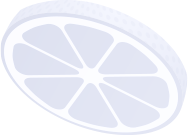













Consumer Psychology in Traffic Arbitrage: Psychological triggers as a way to increase the effectiveness of advertisements
Traffic arbitrage is the art of attracting users’ attention and turning them into buyers. Because of increasing competition among advertisers, simple ad placement no longer works. To gain the attention and trust of the audience, it is necessary to understand the psychology of consumers. In this article, we will look at the key psychological triggers that help to increase the effectiveness of advertising campaigns, and give practical recommendations on their application.
1. What are psychological triggers and why are they important
Psychological triggers are elements that affect the subconscious mind of a person and encourage him to act. These triggers are based on basic emotions, needs, and instincts. In the context of traffic arbitrage, their use allows you to:
- Increase the clickability (CTR) of ads;
- Increase conversion on landing pages;
- Create an emotional connection with the audience;
- To form long-term brand loyalty.
Let’s look at the main triggers that are often used in arbitrage.
2. Fear of lost profits (FOMO)
People don’t like to miss opportunities. This feeling of fear of Missing out (“Fear of Missing Out”, FOMO) is a powerful incentive for action.
How to use:
Limited Offers: Indicate that the promotion is valid until a certain date or that the number of products is limited.
Example: “Only today! 50% discount on the first 100 orders.”
Time counters: Place a timer on the landing page that counts down the remaining time until the end of the promotion.
Social proof: Indicate that other people have already taken advantage of the offer. For example: “87 people have already placed an order in the last hour.”
3. The scarcity effect
The idea that a scarce commodity is more valuable is firmly entrenched in people’s subconsciousness. When something is not enough, it automatically seems more attractive.
How to use:
Indicate that the last units of the product are left.
Use the words “rarity», “limited edition», “unique offer».
Example: “There are only 3 items left in stock! Hurry up to buy now.”
4. Social Proof
People tend to trust the opinions of others. If they see that others have already made a choice in favor of the product, it increases the likelihood that they will do the same.
How to use:
Post real reviews and ratings on the landing page.
Use success cases that describe the results of using your product.
Add user or customer counters, for example: “More than 5,000 satisfied customers.”
5. The principle of reciprocity
When you give something for free, people feel obligated to reciprocate. It can be a trial period, free content, or a useful gift.
How to use:
Offer free bonuses: e-books, consultations, gifts.
Let’s get free test access to your product.
Example: “Get a free healthy eating checklist when you purchase our vitamin supplements.”
6. Urgency
Urgency makes people make decisions faster. It is especially effective for landing pages and advertisements.
How to use:
Use the words “now”, “immediately”, “urgently».
Specify the deadline for completing the action: “Have time to order before midnight!”
Example: “The promotion ends in 2 hours. Order now!”
7. Emotional connection
People make decisions based on emotions. Creating an emotional connection with the audience helps to increase trust and loyalty.
How to use it:
Tell a story that users can associate themselves with.
Use visual content that evokes emotions (for example, happy faces or dramatic shots).
Focus on the values that are important to your audience.
Example: “This cream helped me get rid of joint pain and return to an active life.”
8. Simplicity and clarity
Complex ads or landing pages scare away users. The simpler the message, the more likely it is that the user will perform a targeted action.
How to use:
Simplify the text and avoid complex terms.
Use clear and short calls to action: “Buy now», “Leave a request».
Make the landing page interface intuitive.
9. Personalization
People appreciate an individual approach. Personalized advertising generates more trust and engagement.
How to use:
Use the username in the title or text of the ad.
Show personalized recommendations based on interests or purchase history.
Example: “Ivan, your ideal choice for a healthy lifestyle is our organic vitamins.”
Conclusion
Psychological triggers are a powerful tool in traffic arbitration. They help to better understand the needs of the audience and build effective communication. Use FOMO, social proof, the principle of reciprocity, emotional connection and other triggers to increase conversions and achieve success in your campaigns.
Don’t forget to test different approaches and analyze the results. This is the only way you can find the optimal strategy that will bring the maximum return.
Have a good conversion and effective campaigns!
